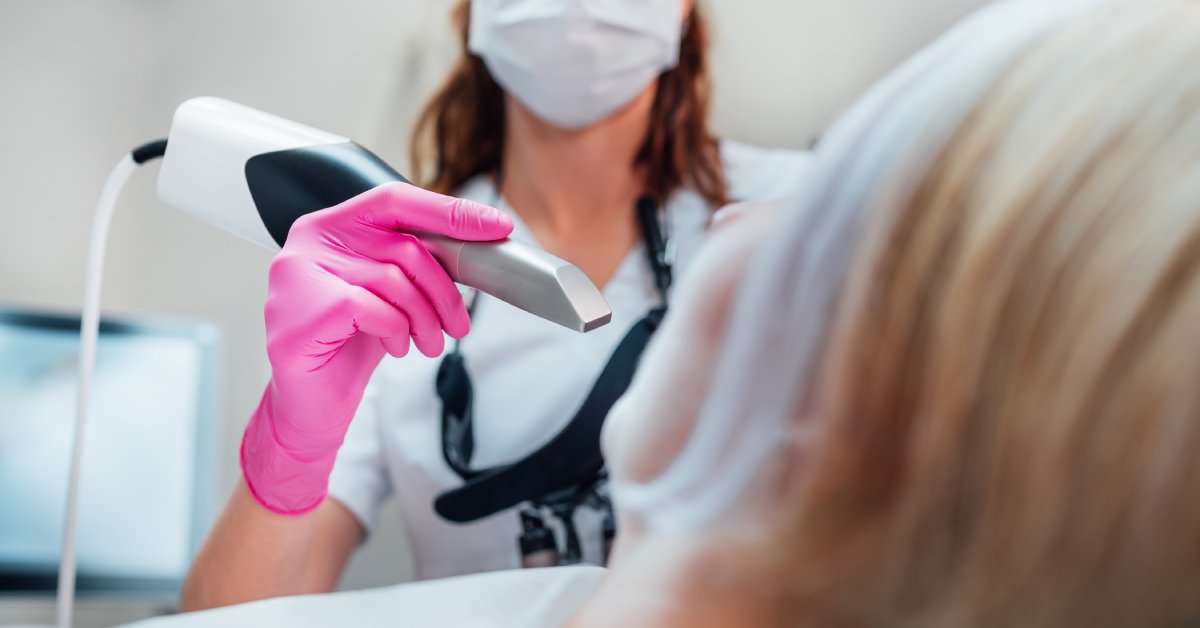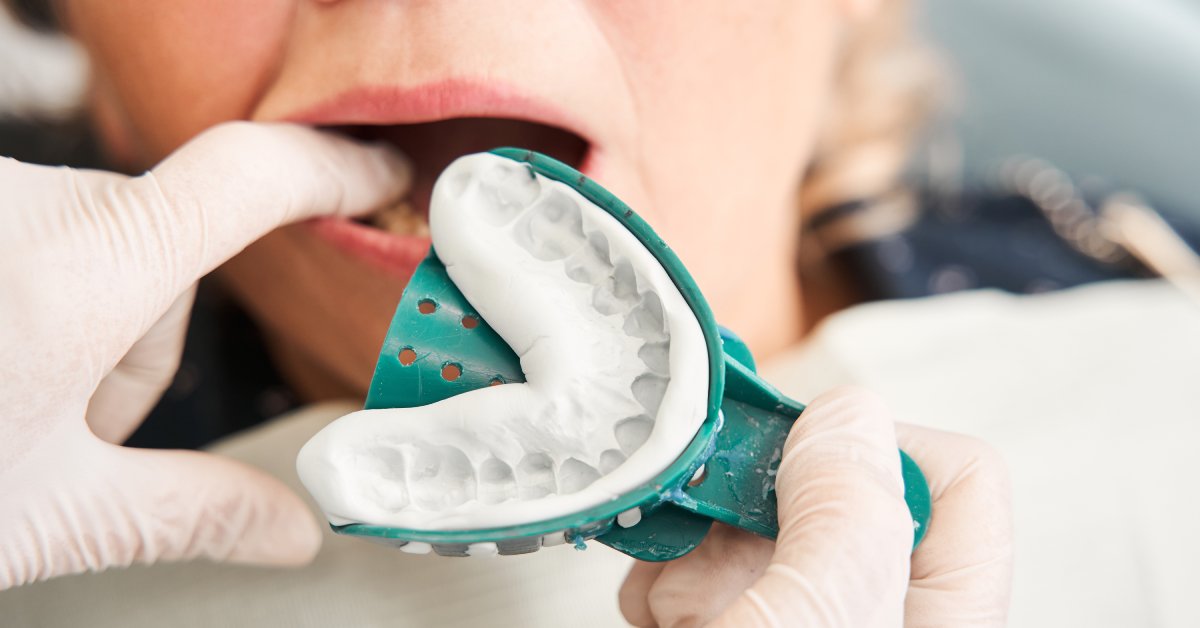
If you just had a root canal or have a cracked, damaged, or decaying tooth, your dentist may recommend a dental crown. Thanks to advances in modern dentistry, patients have the option of choosing between CEREC and traditional crowns. Read on to learn what you should know about the two crown types so you can make the best decision for your oral health.
Why You Should Get Dental Crowns
Before examining the differences between CEREC and traditional crowns, let’s address when and why you might consider dental crowns. When a tooth incurs so much damage that it’s incapable of functioning on its own, a dental crown can provide protection and support. Thanks to the crown, you will also be able to chew and speak comfortably, using that tooth the same as any other.
A protective crown stabilizes tooth cracks, helping to prevent the tooth from breaking further—this is a common problem of weakened teeth. A crown can also replace tooth structure that has already been lost. By opting for a crown at the right time, you will proactively safeguard your long-term oral health and preserve the integrity of your natural teeth.
Additionally, your dentist may recommend that you have a crown placed on a tooth that recently had a root canal. Teeth with root canals are more likely to break. By having a crown placed on a root canal-treated tooth, there is a lower chance of the tooth breaking. Further, the root canal has a smaller risk of bacteria leaking into the root canal and compromising it. A root canal is a big investment, and protecting it with a crown greatly improves the tooth’s overall lifespan.
Finally, dental crowns restore the tooth’s shape and appearance, improving the look of discolored or misshapen teeth and boosting your confidence. With proper care, crowns can last for many years, making them a sound investment in your dental health and overall well-being.
How Your Dentist Makes a Traditional Crown
Traditional crowns can consist of multiple materials, including metal, porcelain, or both. A traditional crown requires a longer process spread out over several appointments. You can read more about the steps below.
Appointment 1: Crown Shaping, Impression, and Temporary Crown Placement

When you arrive for your first crown visit with your dentist, they’ll numb your mouth with anesthetic and remove the damaged portion of your tooth. Then, the dentist will shape your tooth so the crown fits securely. After that, your dentist will take a physical mold, called an impression, of your prepared tooth, the surrounding teeth, and your bite.
This mold captures the exact dimensions needed to design a crown that fits accurately and aligns with your existing bite. The impression goes to an off-site dental lab, where dental laboratory technicians craft your custom-made crown.
Since traditional crowns require time for fabrication, you won’t receive yours right away. The fabrication process usually takes at least two weeks. In the meantime, your dentist will place a plastic crown with temporary cement in your mouth. This crown will allow you to eat and speak comfortably while safeguarding the prepared tooth from sensitivity, bacteria, or damage.
Your dentist will also provide you with advice on protecting your temporary crown, which is less durable than a permanent one. While having a temporary crown in place, it’s important to avoid hard, crunchy, and sticky foods, as temporary crowns are easy to break and come off with little force. Following these instructions will help you maintain your overall oral health during this transitional period.
Appointment 2: Permanent Crown Delivery

When the lab finishes your permanent crown, you will have to return for a second appointment for the final fitting and placement. After your dentist gives you another dose of anesthetic, they will carefully remove the temporary crown.
Before placing the permanent crown, your dentist will clean the tooth for a proper crown fit. Once the dentist is satisfied with the fit, they will place the permanent crown using a dental-grade cement or a bonding agent to hold it in its final position, a procedure called cementation.
This adhesive creates a secure, durable attachment while sealing the tooth to prevent bacteria from entering. With your new crown in place, you can confidently use it to chew and smile. While traditional crowns offer durability and quality, the multistep process requires additional time (and anesthetic) for fabrication and placement.
How Your Dentist Makes a CEREC Crown
CEREC, or Chairside Economical Restoration of Esthetic Ceramic, is another option you should know when comparing traditional vs. CEREC crowns. CEREC crowns are ceramic crowns and are tooth-colored. Here’s an overview of the steps required for CEREC dental crown placement.
Appointment 1: Crown Shaping, Digital Tooth Scanning, and Permanent Crown Delivery
Like the process involved with fitting a traditional dental crown, if you want a CEREC crown, your dentist must remove your tooth’s damaged portions and shape it appropriately. Afterward, they will need to make an impression.
However, when they make an impression for a CEREC crown, the dentist will instead use a digital scanner to create a 3D rendering of your teeth. The digital scan is quick and accurate, offering more comfort to patients than a traditional impression.
Once your dentist finishes creating the digital impression, they’ll use CAD/CAM software to custom-design your crown to fit the specific shape of your teeth. This advanced software ensures the dental crown aligns with your bite and blends in aesthetically with nearby teeth.
After your dentist completes the crown’s design, they will send it to an in-office milling unit. This high-tech device then crafts the crown efficiently while you sit and relax in the dental chair. This method eliminates the additional appointment associated with traditional crowns as well as the need to wear a temporary crown. In fact, the entire appointment for CEREC crowns should take 90 to 120 minutes versus the two-week wait you would have to undergo when getting a traditional dental crown.
After the unit has finished manufacturing your new ceramic crown, your dentist will check its fit and appearance. Your dentist may decide to add custom colorization for a front tooth, creating an even more personalized and natural look. After adjusting it, your dentist bonds the crown to your tooth, creating a secure, lasting attachment. You can leave the dental office the same day with your permanent crown in place, making it a convenient option for busy patients.
CEREC and traditional crowns deliver lasting results and can provide patients with many functional and aesthetic benefits. However, both processes differ in terms of length and convenience. Use the information above to guide you in deciding which is the best solution for your oral health.
No matter which option you choose, you can count on Pinnacle Dental Associates to help you add a quality crown to enhance your smile. Our dental crown and bridge services offer both traditional and CEREC crowns, so you can choose your preferred method that makes you more comfortable while you undergo this procedure.
